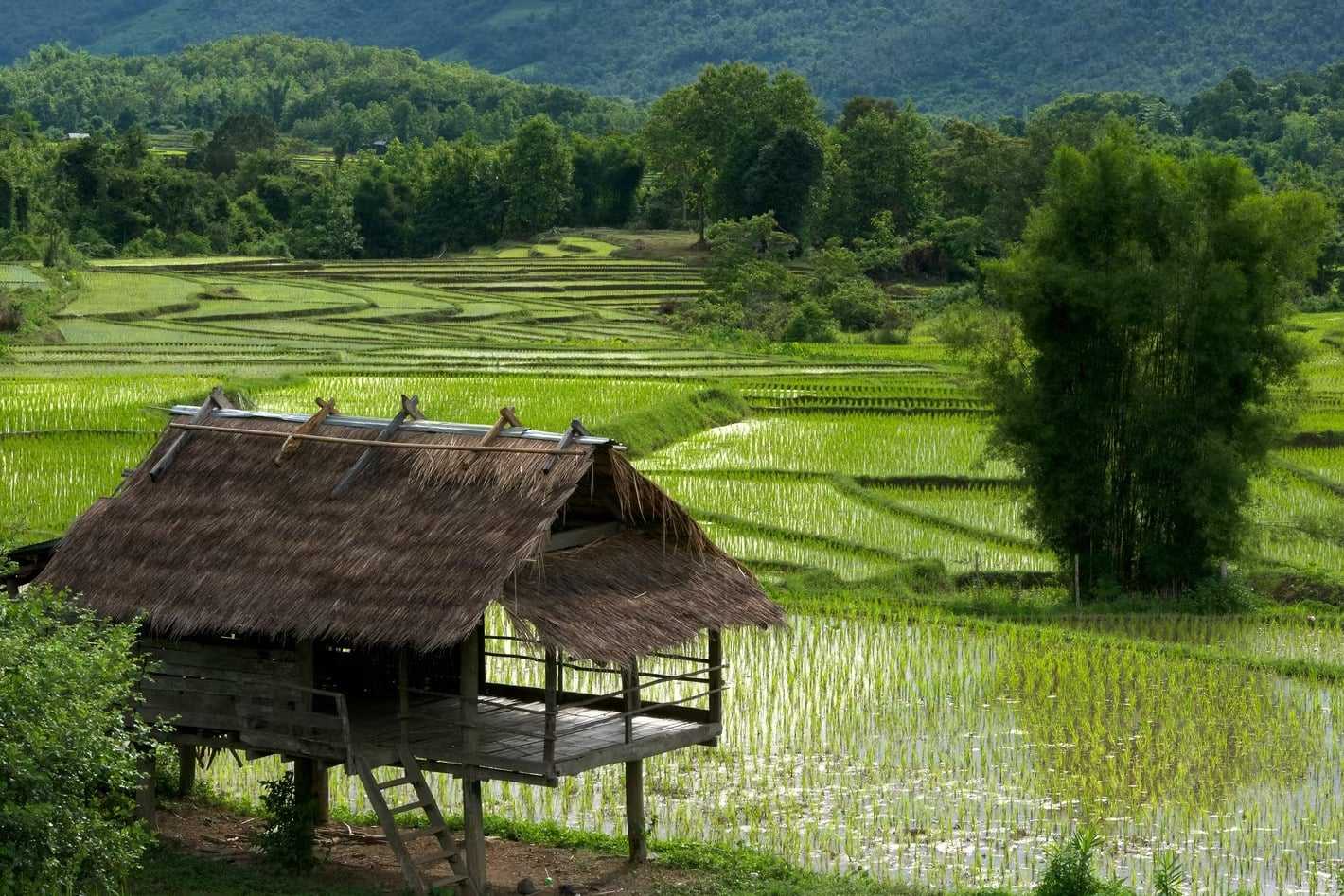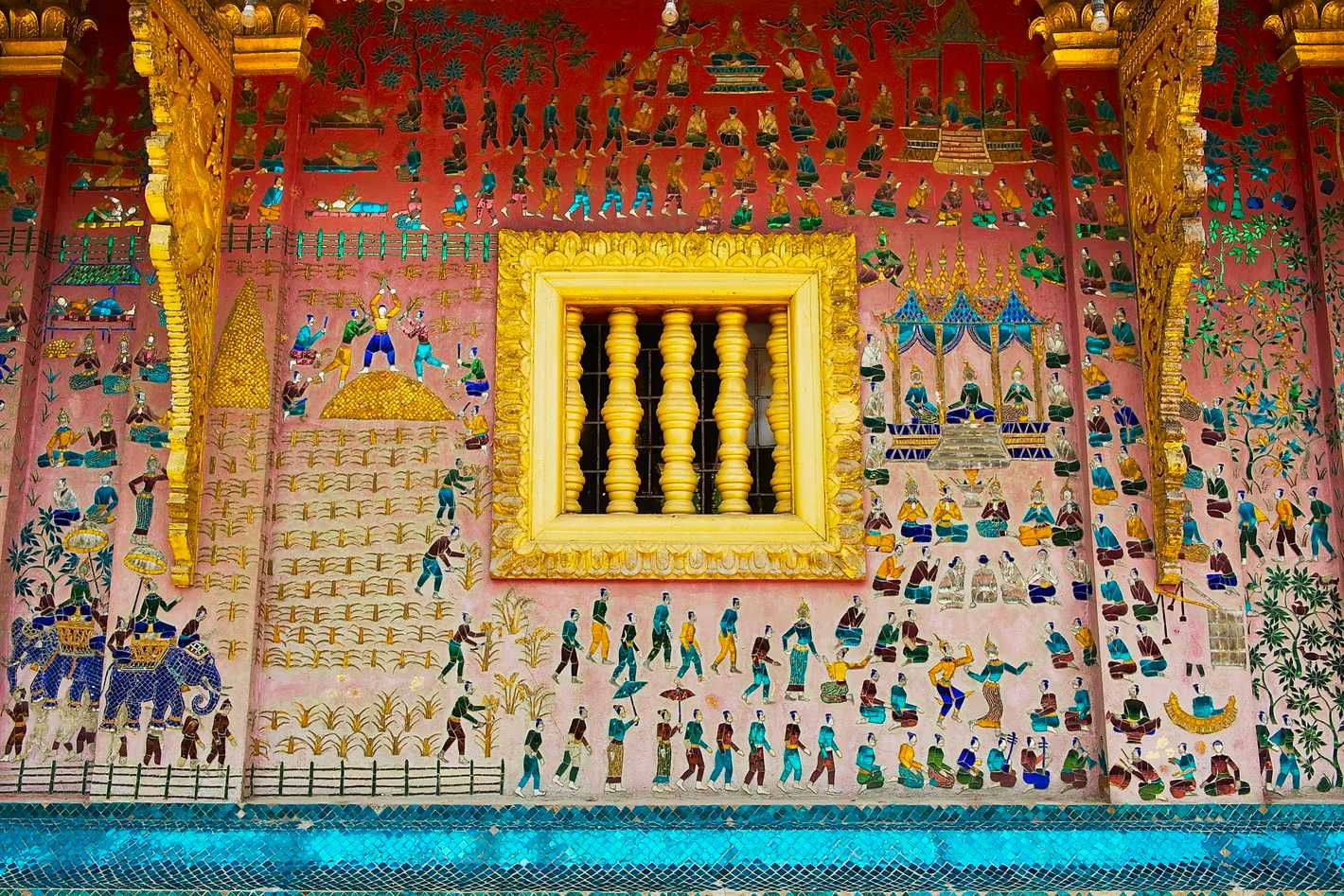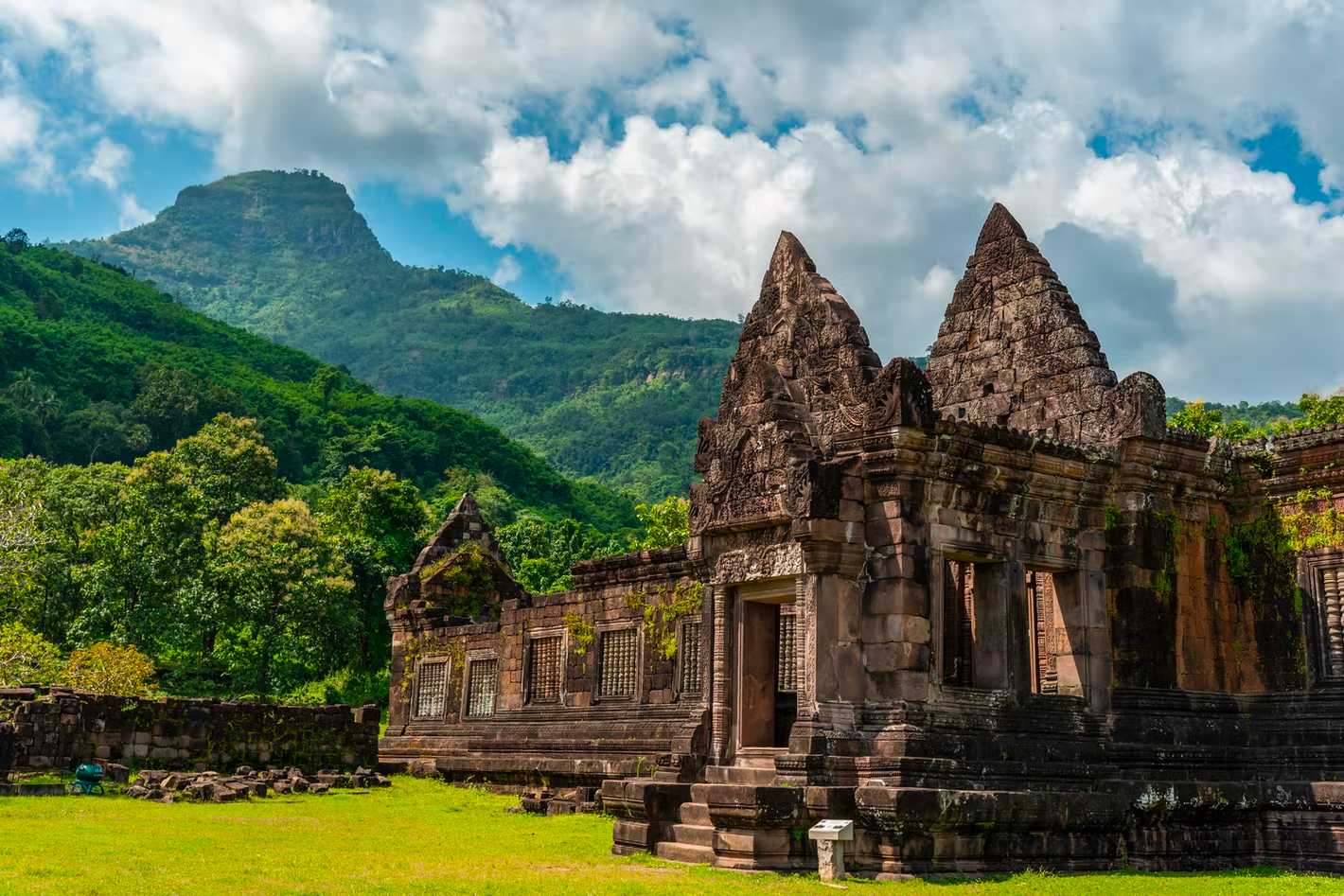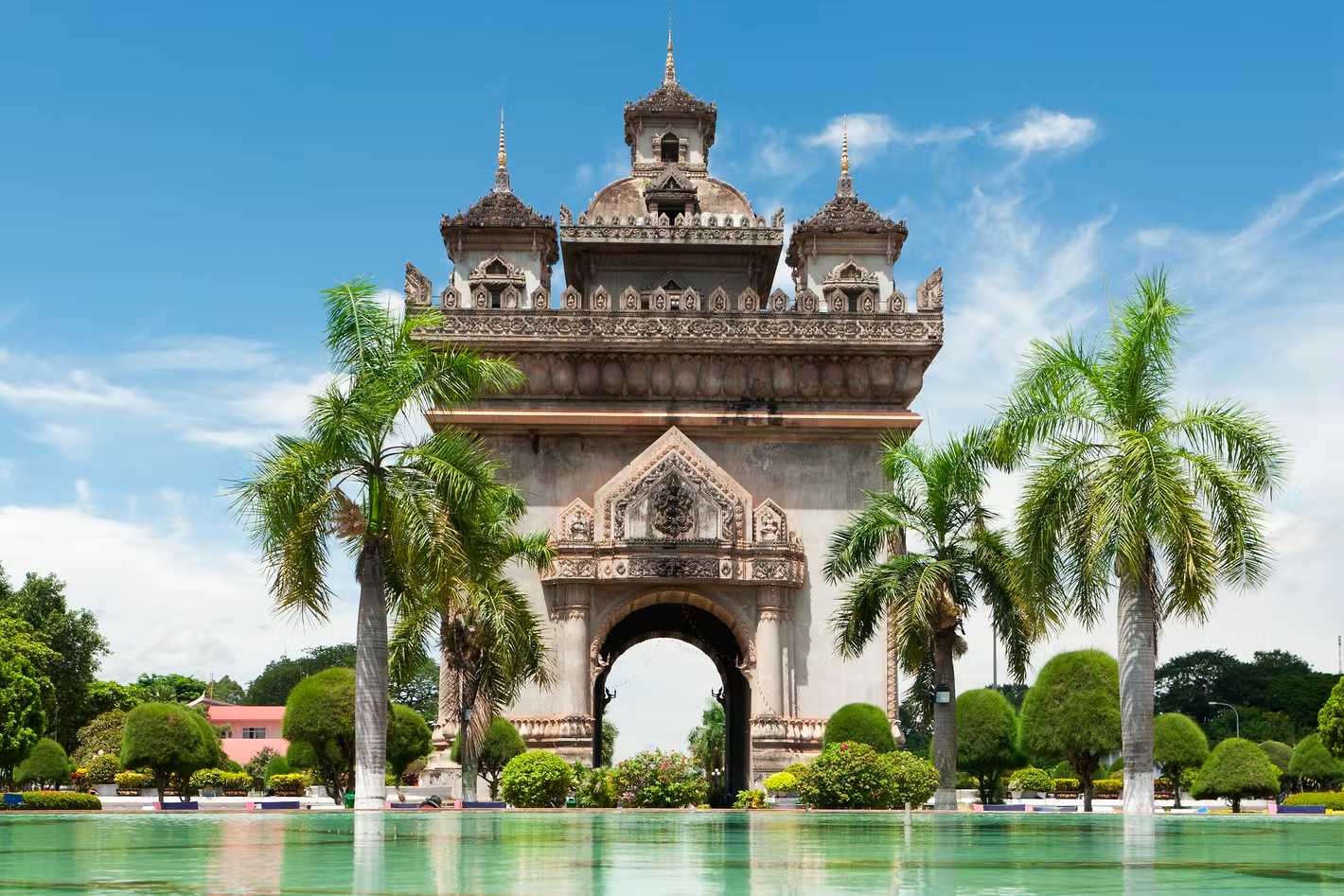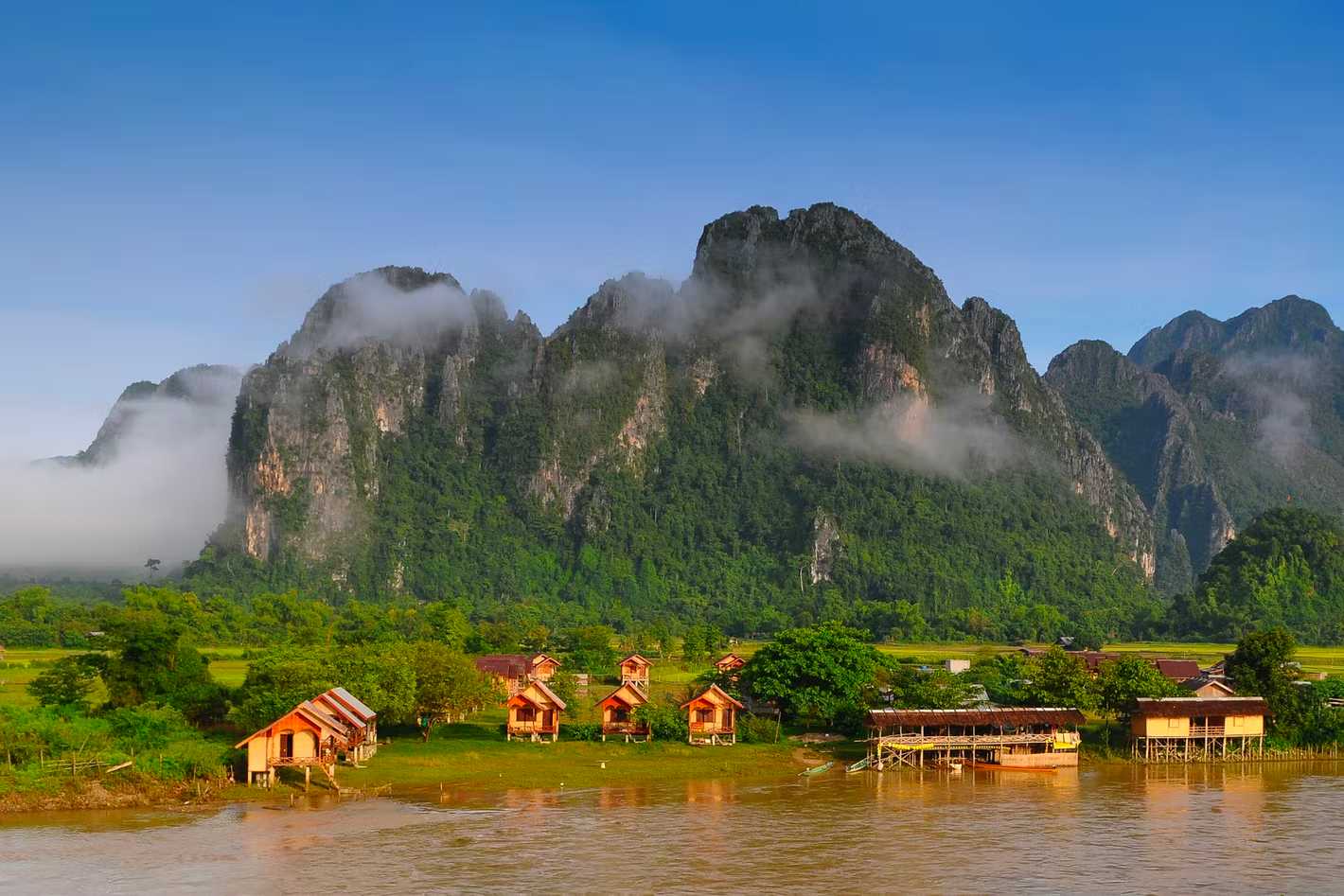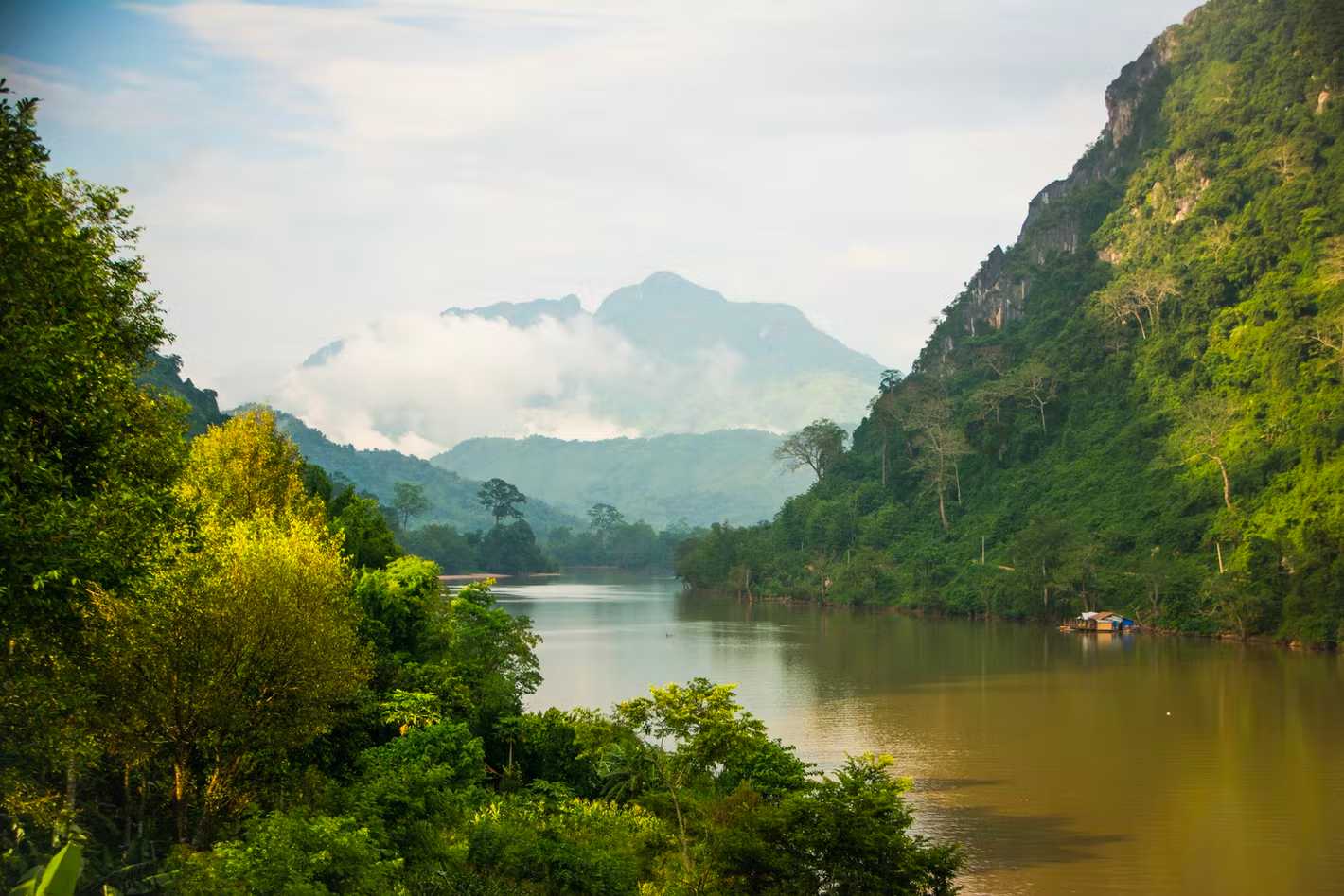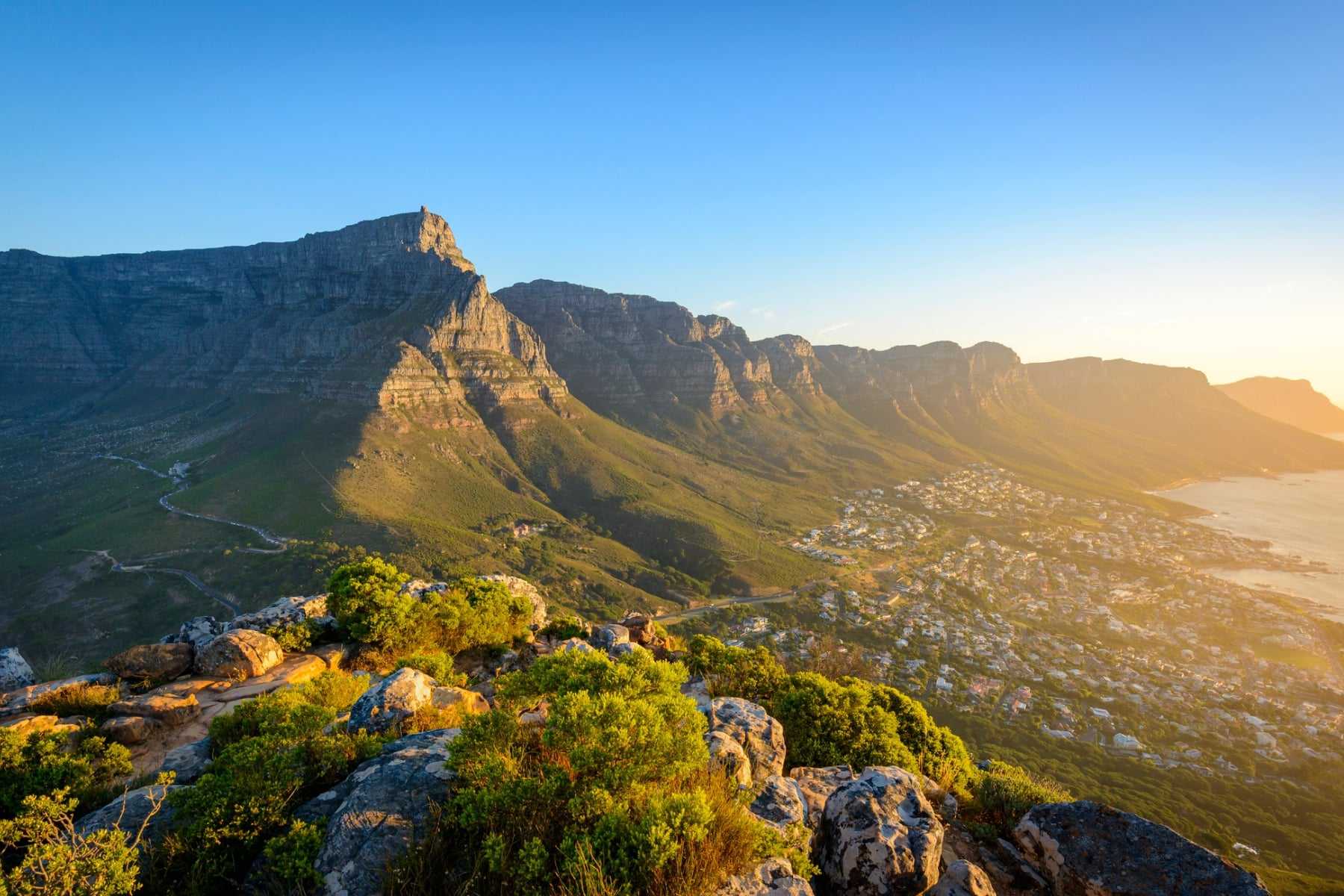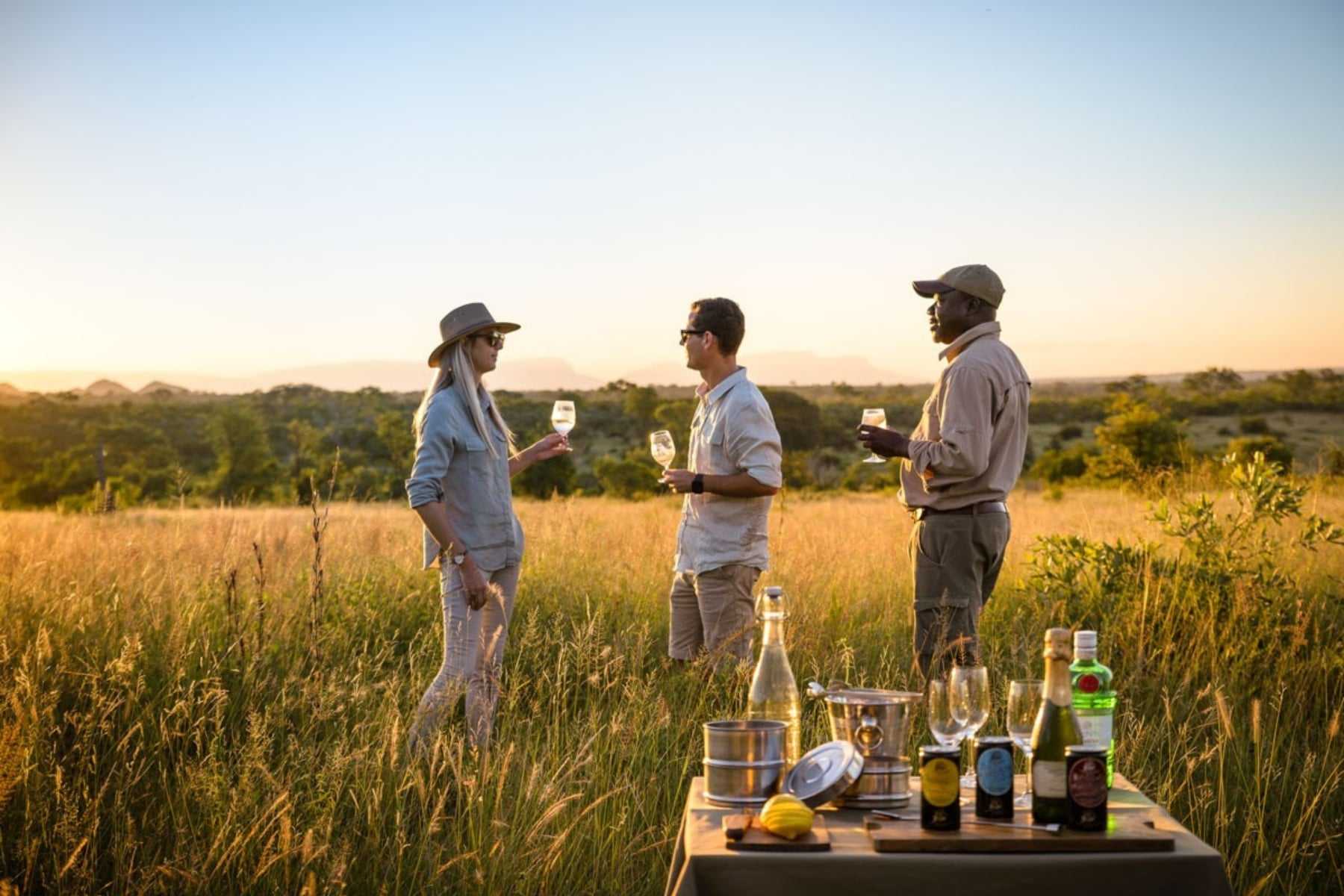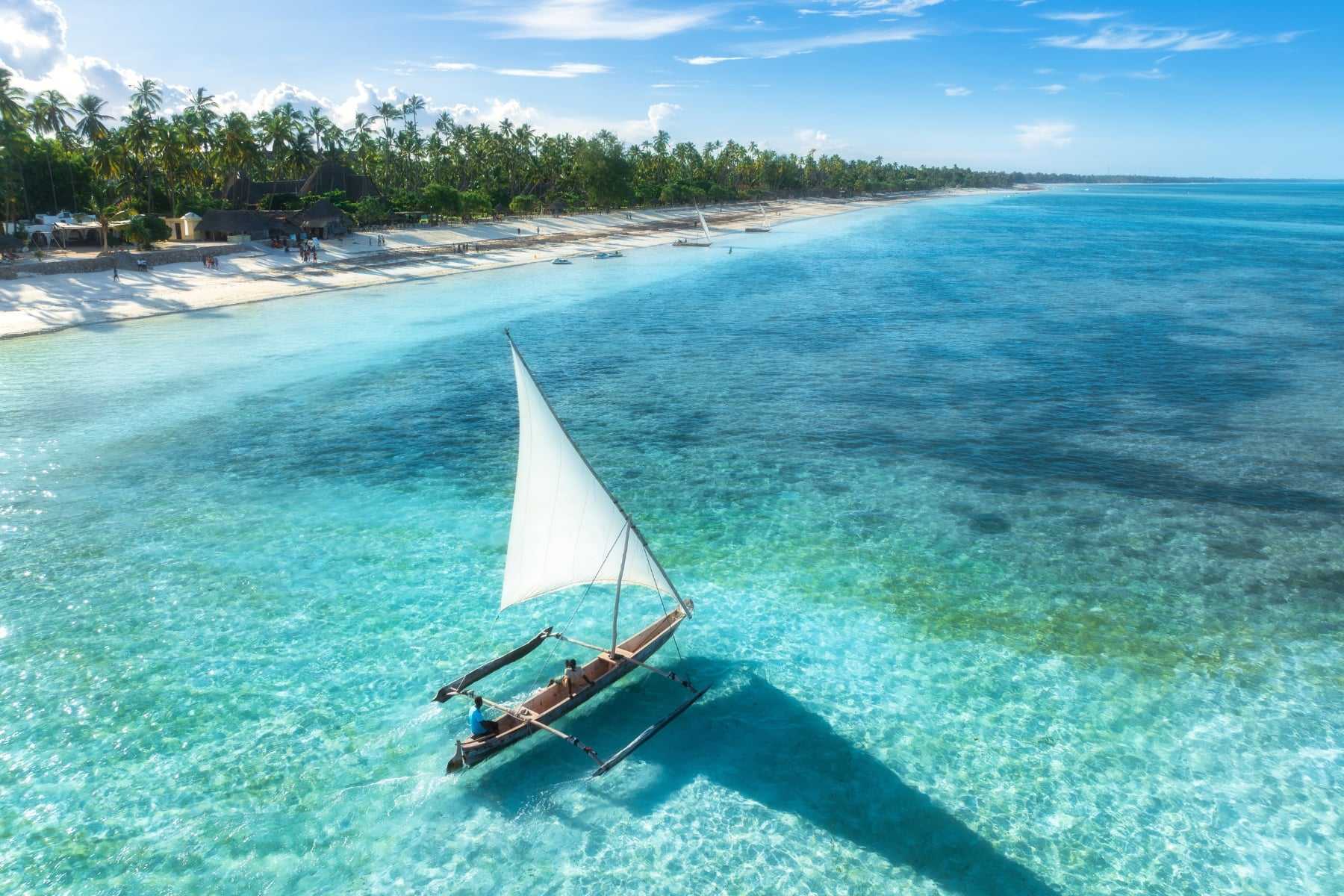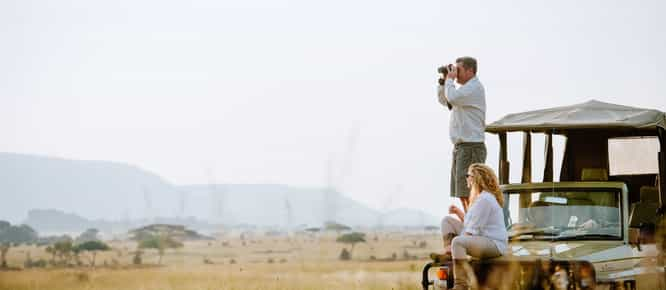Visiting Laos is like being let in on a secret. This is a country where burbling rivers and quiet country roads lead you between ancient royal towns (there really aren’t any cities in Laos) and temples, French-influenced villages and traditional tribes. Amongst it all, there’s always a chance to discover something beautiful, whether you crave kayaking across rivers and lagoons, admiring gilded Buddhas, or letting the country’s unhurried atmosphere wash over you. And if you’re not sure where to begin, our Laos country guide will provide a helping hand and ensure your dream trip becomes a reality.
Luang Prabang & Pakbeng
Much of life in Laos takes place along the rivers and Luang Prabang is no exception. An erstwhile royal capital, the town sits at the sacred meeting place of the Mekong and Nam Khan rivers, blending a 1,500-year-long history with plenty of natural beauty. Take your time wandering between bamboo houses, French villas and over 30 ornately-painted wats – and definitely wake early to see the saffron-robed monks collecting their alms. As for those natural surrounds, mountains rise amongst pockets of emerald forest and rice paddies and there are many trekking and biking opportunities, as well as the chance to swim in the turquoise pools of the Kuang Si Waterfall. Should you be planning a cruise down the Mekong, Pakbeng sits in sleepy solitude between Luang Prabang and the Thai border and makes the perfect pitstop to enjoy a Beerlao at sunset.
How do I do it?
If you’re already in Laos, Vientiane offers multiple flights a day to Luang Prabang, while Pakse offers two flights a week. There are also flights from Chiang Mai, Hanoi and Siem Reap, as well as multiple daily flights from Bangkok. After landing in Luang Prabang, a private transfer or taxi journey will take you to the main town. It’s also possible to travel by train (2 – 3 hours) or road (5 – 6 hours) from Vientiane. Of course, Luang Prabang falls along the Mekong River circuit, which extends from Thailand into Laos with multiple stops along the way.
Where do I start?
Luang Prabang is a staple in most Laos itineraries. Our Classic Laos trip takes you from picturesque Vientiane to adventurous Champasak, ending in Luang Prabang for visits to an elephant sanctuary at bathtime and hiking through the mysterious Pak Ou Caves lined with hundreds of Buddha statues.
Champasak
Follow the Mekong River to the south of Laos and you’ll discover Champasak, encircled by the Phou Khao Mountains and brimming with history. Champasak refers both to the province (Pakse is its capital) and the charming, riverside town, which was once the capital of an independent kingdom. The jewel of Champasak is the captivating Wat Phou Ruins, which are regarded by many as the blueprint for Cambodia’s iconic Angkor Wat. Then, turn your sights to the water and discover a bounty of adventure. Sail amongst the 4,000 Islands archipelago and spy vivid birdlife, laze on a clandestine beach, meet the communities living on one of the few inhabited isles, and kayak down the Mekong alongside endangered Irrawaddy dolphins. Or slow things down with a peaceful journey into the highlands to watch the silk weavers in action, peruse the markets, and taste some of the finest coffee in the world.
How do I do it?
It’s possible to reach Champasak by flying from Vientiane to Pakse, which is 36 km north of the main town. Depending on your previous destination, it’s also common to travel by bus along Route 13 or cross the Mekong River via a ferry, which docks at Ban Phapin. There will be plenty of tuk tuks waiting to take you into Champasak and, once there, it’s easy to get around on foot, bicycle or tuk tuk.
Where do I start?
Why not combine the tiny countries of Laos and Cambodia on this trip that takes you from the historic Luang Prabang, down the Mekong River to Champasak, before crossing into Cambodia to see the famous Angkor Wat and enjoying a little sunshine and snorkelling on the coast.
Vientiane
Vientiane stands in a scenic spot along the banks of the Mekong. Blissfully, the capital is no buzzing metropolis and the palm-lined boulevards, restored palaces and artful boutiques are a lovely place to call home for a few days. You can even visit the city’s own Arc de Triomphe! Vientiane has also endured its share of tragedy and the National Museum offers a deeper look at its history, while the Wat Si Saket, one of Laos’ most revered monuments, is home to thousands of Buddhas and the only temple to survive Siam’s invasion. Stroll through the city and marvel at That Luang’s gleaming, golden stupa, visit grand temples and browse the fantastic markets – don’t miss out on the famous Sin Dat BBQ!
How do I do it?
As Laos’ capital, there are direct flights available to Vientiane from Vietnam, Cambodia and Thailand, with Bangkok being the most common route. If you’re feeling adventurous, travel by train from Thailand or cross the Thai-Lao Friendship Bridge by private transfer. Domestically, there are flights from Luang Prabang and Pakse, and it’s possible to make the scenic drive from Luang Prabang (around 5.5 hours).
Where do I start?
Vientiane is a popular stop on any Laos trip and we like combining it with the highlights of Thailand and Cambodia. This trip will take you from shining temples and palaces to ancient ruins and royal relics, down the great Mekong River and end at the striking Angkor Wat in Cambodia.
Vang Vieng
On approach to Vang Vieng, it appears to be nothing but limestone mountains, shamrock-green rice fields and wilderness trails for miles and miles. But dig a little deeper and you’ll discover that this beauty spot in the centre of the country is Laos’ adventure hub. Raise your heart rate with a kayak along the burbling Song River, abseil down craggy rock faces, hike to lofty viewpoints and ancient Hmong villages, and glide overhead in a hot air balloon. If you aren’t feeling quite so, ahem, adventurous, Vang Vieng certainly isn’t a bad place to take in the view with a cocktail in hand, before tasting your way through the fantastic night markets…
How do I do it?
Vang Vieng’s remote location makes it only accessible via road either travelling by private transfer or bus, which depart from Vientiane (3 – 5 hours) and Luang Prabang (6 – 9 hours). Tuk tuk rides are readily available from the bus station. Minibuses are a faster option, but the slower express buses make the winding mountain roads more pleasant.
Where do I start?
A few days in Vang Vieng can easily be combined with Vientiane and Luang Prabang, and our trips are fully customisable. Take your pick or make one of your own with a stop in Vang Vieng.
The North
Muang La and Nong Khiaw are the gems of northern Laos, where remote communities live as they have for hundreds of years and mountains rise like guardians over the green landscapes. Idyllic and under-the-radar, Muang La’s air is broken only by the babble of the Nam Pak River or hot springs, which make excellent spots to spend the evening listening to local gossip or floating on a bamboo raft. Accommodation-wise, choose one of the fabulous eco-lodges and do as little as possible, or head for the hills in search of the best view in the valley. On the other side of the coin is Nong Khiaw, a place made for adventurous travellers. Hike to find hidden waterfalls and historic caves, glide downriver on a raft, cycle into the beautiful surrounds or picnic on a mountain top. Sublime.
How do I do it?
Because of their remote location, it takes some patience to reach Muang La and Nong Khiaw. The latter can be accessed by car or bus from Luang Prabang (around 3 hours), or a cruise down the river from Vientiane. Once there, you’ll mostly walk, cycle or take a tuk tuk from place to place. Muang La can be visited by car, departing from Luang Prabang (5 – 6 hours) or Pakbeng (around 4 hours). You can travel between the two via a cruise along the river, car (2 hours) or bus, which takes around 4 hours – but the journey is exceedingly scenic.
Where do I start?
Our off the beaten track trip is made for exploring these northern highlights. Get your sightseeing done in Luang Prabang and Vientiane, then enjoy a river cruise north for the added scenic factor.
